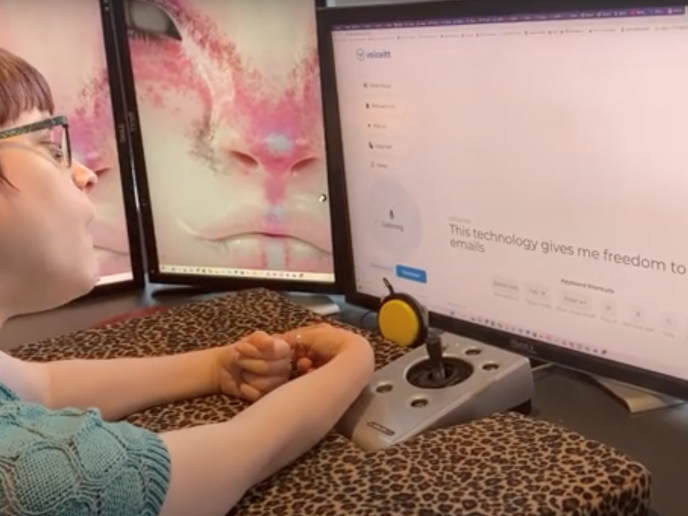Inclusive voice AI for people with speech impairments
Voice technology is booming. According to a 2023 survey, more than 8 out of 10 business leaders employ it in their organisation. We increasingly use automatic speech recognition (ASR) to interact with virtual assistants and home technology, search and shop online, and transcribe spoken words. So far, this revolution has not been an inclusive one. “Ironically, many of those who need these technologies the most – people with disabilities, who require help to switch off the lights or turn on the TV, for example, cannot access them because they also suffer from speech impairments,” says Sara Smolley, vice-president and co-founder of ASR start-up Voiceitt. People with impaired speech patterns form a diverse community including for instance patients suffering from Down’s syndrome and cerebral palsy, but also many ageing adults. Thanks to the EU-funded NUVOIC project, Voiceitt is now enabling many in this diverse group to interact and express themselves in new ways. NUVOIC stands for ‘new voice’. The project’s objective was twofold, Smolley explains: “We wanted to allow people with speech disabilities to express themselves freely, and to offer them more independence by giving them access to AI-powered voice technology.”
A technological leap forward
Voiceitt’s first-generation technology offered users the possibility of training an application on everyday phrases which they could then use to express themselves. With the new project funding under NUVOIC, the team has been able to take this idea to the next level. The new web-based Voiceitt application, which is now commercially available, is capable of recognising spontaneously produced speech after a brief training phase where users record around 400 short sentences. The recognised speech can be transcribed or read out by a voice synthesiser to interact with other people. It can also be used to interact with AI tools such as ChatGPT. “For instance, someone could say ‘What’s the weather in Brussels?’ or ‘Help me plan a birthday party’ using our app,” Smolley notes. To get there, the NUVOIC project team, led by the consortium partner Karten Network, collected large samples of voice recordings of people with impaired speech. These data sets were combined with state-of-the-art machine learning techniques to build unique speech recognition.
New ways to connect
In addition to the standalone app, the team also delivered an application programming interface (API). Together with partners including imec, they worked on integrations that could further improve users’ independence and provide them with new ways to connect with others. One case in point is their collaboration with Cisco integrating Voiceitt with Webex. The add-on allows users with non-standard speech to speak naturally in a meeting and have their words transcribed and displayed in real time for the other meeting participants. The Voiceitt team also worked with e-commerce giant, Procter & Gamble (website in French), to explore how Voiceitt could be used for voice shopping.
A broad range of potential users
The technology could potentially open the door to better voice interactions for other users as well. “We get a lot of interest in applying the technology to accents and dialects,” Smolley remarks. “We also conducted a pilot with a company interested in exploring voice technology for deaf individuals.” As a next step, the team is preparing to expand its offering to other European languages. “In this context, we are actively seeking collaborations across Europe – partners and participants who would be interested in testing the technology or providing voice samples,” Smolley adds.
Keywords
NUVOIC, automatic speech recognition, ASR, impaired speech, speech disabilities, virtual assistant, application programming interface, API

